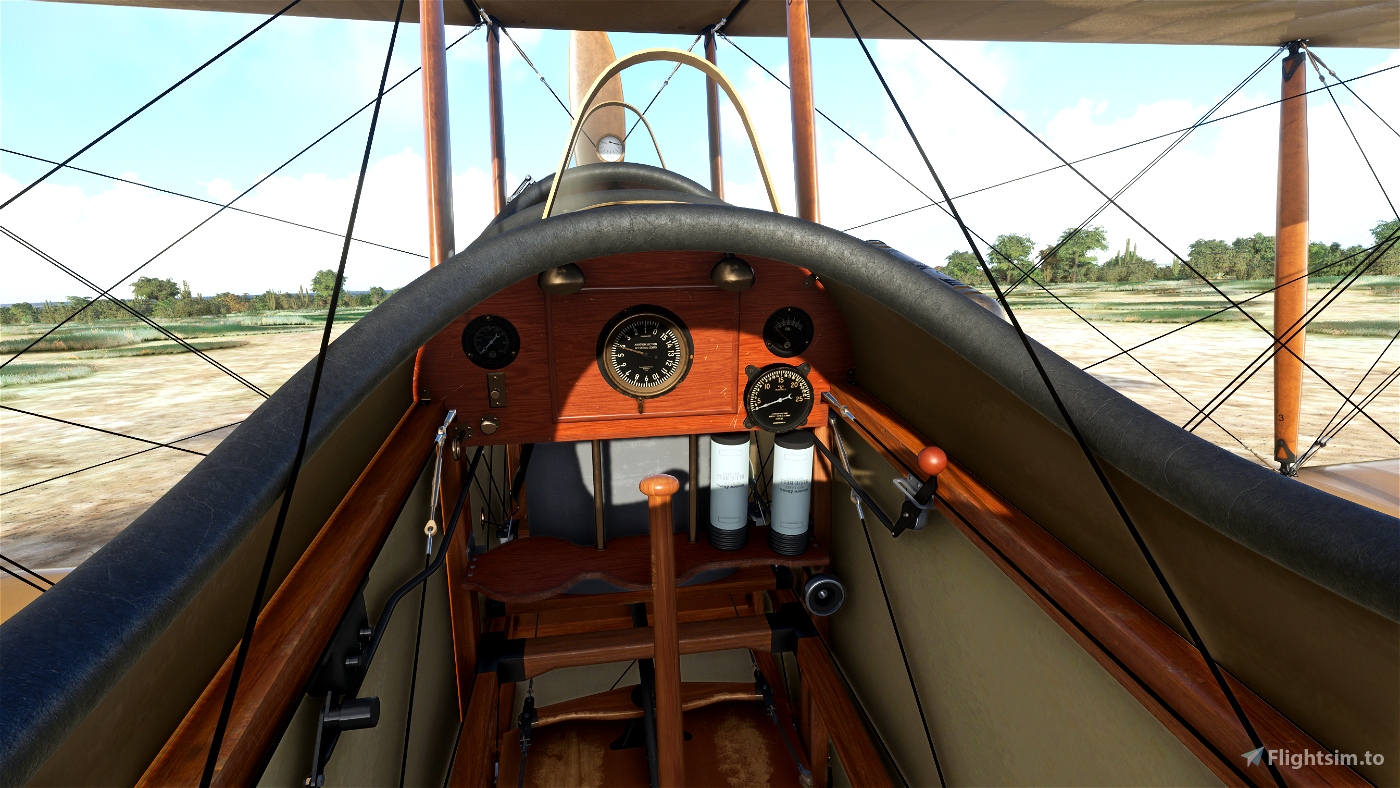This is a repaint for the Curtiss JN-4D Jenny included in the freeware 40th Anniversary Edition addon. This repaint depicts an earlier Curtiss JN-3 Jenny, one of eight assigned to the U.S. Army's 1st Aero Squadron, circa 1916, flown by the squadron's commander Captain (later General) Benjamin Foulois during the Mexican Expedition (also known as the Punitive Expedition), in the hunt for Pancho Villa, led by General John J. "Blackjack" Pershing. Using Curtiss JN-3's and later Curtiss Type R's, this became the United State's first use of aircraft in a military operation. A detailed biography of General Foulois' extensive and pioneering service career can be read here: https://www.af.mil/About-Us/Biographies/Display/Article/107091/major-general-benjamin-delahauf-foulois/
I cannot be absolutely certain of the original colors of the fabric and metal panels, but I have made this repaint based on the work of renowned artist and researcher Russell Smith, which depicts the aircraft finished with a yellow varnish on the linnen fabric and khaki-painted cowlings. All other details were made to match original period photos, including the design of the red star on the rudder, recreating the '44' in the exact "font" and size, and the early white rubber tires.
The following history about the use of the aircraft during the Mexican Expedition is taken from artist Russell Smith's website:
"On March 9, 1916, more than 1,000 Mexican horsemen under the leadership of Pancho Villa crossed the border and raided the town of Columbus, New Mexico. 17 Americans were killed as they looted and burned the town. In response, President Woodrow Wilson asked permission from President Carranza of Mexico to send troops into Mexico. Carranza reluctantly agreed under the stipulation that the expedition would be “for the sole purpose of capturing the bandit Villa.” Wilson ordered a “Punitive Expedition,” and assigned General John J. “Blackjack” Pershing to pursue Villa’s forces. Pershing thought this would be a good opportunity to demonstrate the effectiveness of the airplane in military operations, and ordered the 1st Aero Squadron under the command of Capt. Benjamin D. Foulois to Columbus to join the expedition. Pershing’s plan was to use the aircraft for observation support of the ground forces. The squadron’s deployment would represent the first use of a US aviation unit in military action, and the squadron’s simple marking - a red star painted on the airplanes’ rudder - was the first use of a national insignia on a US aircraft
Officially commissioned in 1913, the 1st Aero Squadron arrived in Columbus on March 15, 1916, with only 8 Curtiss JN-3s, 11 pilots, 82 enlisted men, and flew their first reconnaissance sortie on the 16th. This marked the first time American aircraft were used in an actual military operation.
3 days later, on March 19th, the squadron was ordered to report ‘without delay’ to Pershing’s headquarters in Casas Grandes, Mexico. The pilots departed late in the afternoon, but having little night flying experience, the darkness proved to be a major problem for the pilots. One airplane made it to headquarters that night. The next morning 2 aircraft landed. One airplane had returned to Columbus, and 2 others were missing.
Throughout the expedition problems continued to plague the aircraft of the 1st Aero Squadron, and by April 14, only two of the airplanes were in a flyable condition. The 1st Aero Squadron had done all they could with the equipment they had. The bad news reached Washington and Secretary Baker asked Congress for a $500,000 appropriation to purchase 12 new Curtiss R-2 airplanes, equipped with Lewis guns, automatic cameras, bombs, and radios. On April 20, the 1st Aero Squadron was ordered back to Columbus. When they arrived Captain Foulois determined the 2 remaining Jennies were in such bad condition that he set them on fire to make sure no one could order him to fly them again.
The first attempt by a US military air unit could be considered a failure, but in the bigger picture it was actually a learning experience. Although they were unsuccessful in finding Pancho Villa, Captain Foulois considered this a turning point in the development of American military aviation.
The numbers supported his opinion. During the first US military air action, the 1st Aero Squadron flew 346 hours on 540 flights and covered more than 19,300 miles, performing aerial reconnaissance and photography, and transporting mail and official dispatches. More importantly, despite the failures of the 1st Aero Squadron, the military learned that the airplane could no longer be considered an experiment or an oddity, but could become a useful military tool."













Thank you very much for all these excellent Curtiss Jenny liveries John!
1 years ago
TimHH